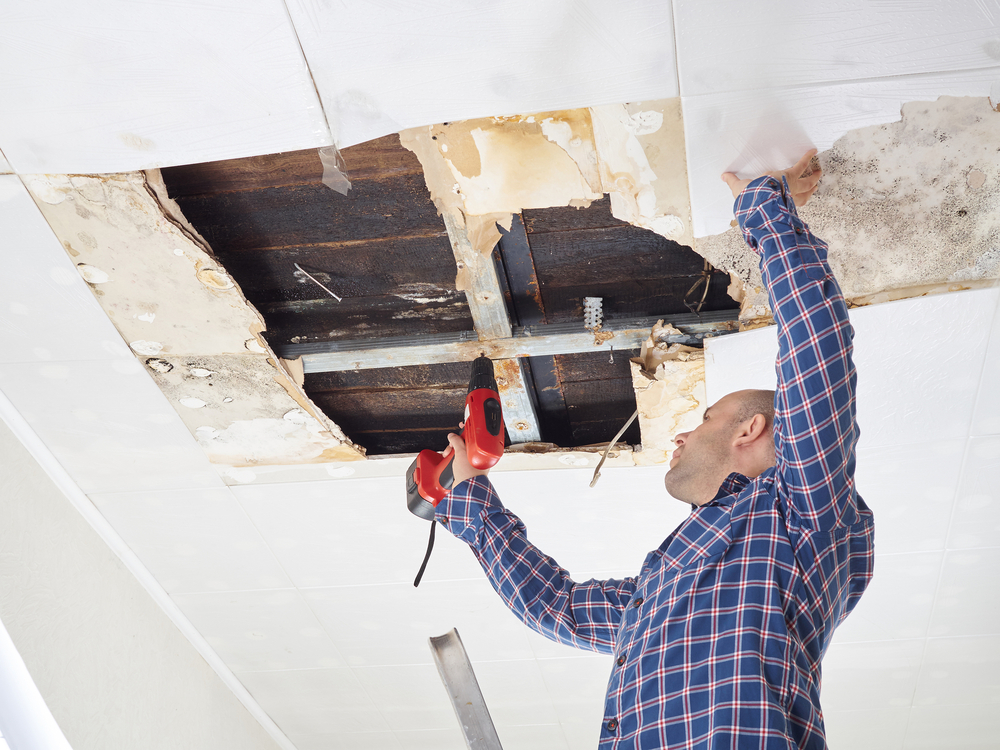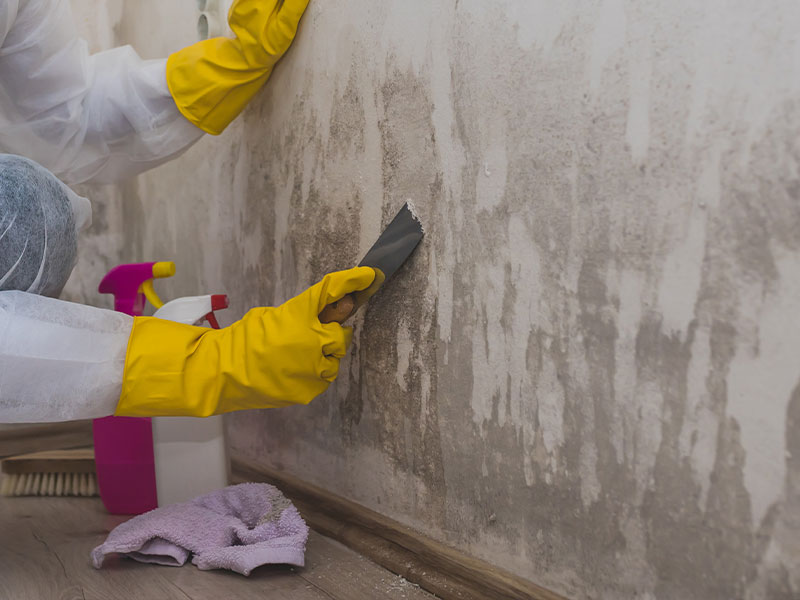Have you ever seen a stain on your ceiling and wondered what it means? Water damage can ruin your home’s look and hint at bigger problems. It’s key to spot and fix ceiling water damage early to avoid big costs.
Key Takeaways
- Identifying the early signs of water damage can prevent costly repairs.
- Common indicators include watermarks, brown stains, and mold presence.
- Winter leaks from roof damage often show up inside your home.
- Ignoring water damage can lead to health risks, like mold.
- Getting a pro to inspect and fix water damage can save your home.
Recognizing the Early Signs of Water Damage
Spotting water damage early is key to avoiding big repairs and health issues. If you see watermarks or brown stains on walls and ceilings, it’s time for a ceiling damage inspection. These stains mean there might have been leaks before or there could be leaks now that need fixing right away.
Mold is another big warning sign. It can turn into a health risk in just 48 hours if there’s water around. So, keep an eye out for it.
Swelling walls or ceilings and trim or wallpaper coming off the walls are also signs. These are clues that moisture is getting in and shouldn’t be ignored. Walls that seem to be sweating or have condensation can also point to water damage.
Spotting water leaks early can prevent big repair bills and keep your home healthy. So, stay alert for these signs.
Potential Causes of Water Damage in Ceilings
Knowing why ceilings get water damage is key to stopping it. Common reasons include leaks that come from different places.
Often, leaks start in bathrooms above the ceiling. This can be from bad plumbing, broken fixtures, or spills. Water pipes in attics can also leak if they crack or move out of place.
Roof leaks are another big problem. They’re often found during roof checks. Missing shingles, damaged roofing, and broken roof vents let water in. This water can move along the structure and hit the ceiling. Fixing the leak’s source is crucial to stop more damage.
By finding and fixing these leaks early, homeowners can prevent water damage. Knowing what causes ceiling leaks helps homeowners act fast to protect their homes.
When Should I Worry About a Water Damaged Ceiling?
Quick action is key when dealing with ceiling water damage to stop further damage and health risks. Spotting early signs like watermarks, swelling, mold, or “sweating” walls means it’s time to act. These signs point to serious problems.
Ignoring these signs can lead to big repair costs and health risks. Checking for water damage quickly helps avoid these issues. It keeps repair costs down and protects the health of those living in the home. Not dealing with it can lead to serious health issues, like breathing problems from mold.
Getting experts to check and fix the damage quickly keeps the home safe and protects everyone inside. If you see these signs, act fast to stop more damage and health problems.
Health Risks Associated with Water Damaged Ceilings
Water damaged ceilings can be a big health risk because of mold. Mold can start growing quickly after moisture hits the area. It’s important to act fast and get a roofing expert to fix the problem quickly.
Mold from leaks in the ceiling is a big worry because it can cause breathing problems. People who breathe in mold may cough, wheeze, or have allergic reactions. If they’re exposed for a long time, these problems can get worse.
But there are more health issues from mold exposure too. People might get skin or eye irritation, or even mold toxicity that can affect the nervous system. Kids, older people, and those with health problems are especially at risk.
Fixing water damage quickly is key to avoiding these health risks. If you ignore it, mold can keep growing. This makes the air inside your home unhealthy and can harm everyone’s health. So, it’s important to act fast to protect your health.
Steps to Take if You Suspect Water Damage
If you notice water damage on your ceiling, start by finding and fixing the leak. This could be from a plumbing problem or a roof issue. First, turn off the water or cover the roof with a tarp to stop more damage.
Next, remove any materials that are damaged by the water. This includes wet drywall and insulation. It’s important to make sure everything is completely dry before you start fixing things. Drywall can stay wet and cause more problems if not dried out first.
Then, decide if you can fix the ceiling yourself or if you need a professional. It’s a good idea to keep records of the repairs for your insurance. This shows what you did to fix the water damage.
Conclusion
Addressing water damage is key to keeping your home safe and healthy. Spotting the signs early is crucial. This lets homeowners act fast. Look out for ceiling discoloration and dampness to prevent big problems.
It’s also vital to know what causes water damage in ceilings. Roof leaks, plumbing problems, and bad ventilation can lead to it. By understanding these causes, you can stop leaks before they start.
Fixing water damage needs careful work and quick action. Mold and weakened structures are serious risks. Knowing when a ceiling is damaged and understanding the dangers is important. Taking steps to fix leaks, big or small, is crucial.
To wrap it up, being proactive in home care helps avoid ceiling leaks and keeps your home safe. Regular checks and quick action are key. If DIY fixes won’t work, call the pros. Protecting your home from water damage keeps it strong and safe for everyone living there.






